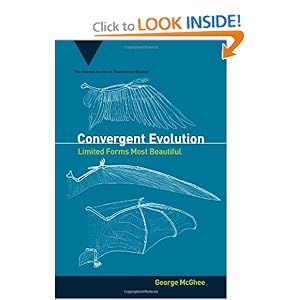Some friends have been reading George McGhee’s book, Convergent Evolution: Limited Forms Most Beautiful. If there was ever a Darwinclog-free look at the evolution of life forms, well, this is a contender, for example …
Rey et al. (1998, 6212) report an “unexpected homology” found in comparing a fungal and an insect protein: fully 25.3 percent of the amino acid sequence is identical in the fungal Qid74 protein and the insect BR3 protein. The fungal protein is used in cell wall construction, whereas the insect protein is secreted in the midge’s saliva, and is used in constructing external tube walls within which the insect lives. Rey et al. (1998, 6215) note that the two genes coding for the two proteins, one fungal and one insect, had to have originated independently of each other, and that the “ancestor of each new gene created de novo has to be a
noncoding DNA sequence that abounds in every eukaryotic genome”; furthermore, the observed protein convergence “was not between the genes but between the similar noncoding repeats whence the two [new] genes sprung quite independently of each other.
That suits design better than Darwinism because an intelligent agent would know what had worked before, and could use it again.
